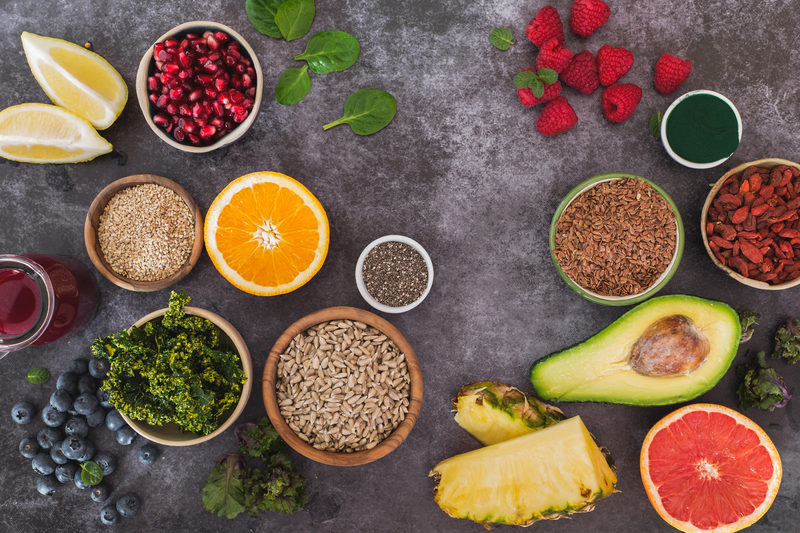Which Fruits and Veggies Have the Most Pesticide Residue? The Dirty Dozen™ 2024 Update

Since 1993, the Environmental Working Group (EWG) has been helping consumers become more savvy shoppers. They’ve conducted research, shared updated information, and doled out tips to help empower people to live healthier lives in a healthier environment. While the EWG researches ingredients, contaminants, and potentially toxic compounds that may be unknowingly found in water, cosmetics, sunscreen, cleaning supplies, and more, they are perhaps best known for annually publishing The Dirty Dozen or a list of produce that contains the highest levels of pesticide.
Since 2004, the EWG has ranked the most popular fruits and vegetables according to pesticide residues, so you know which ones you most likely should buy organic (those on The Dirty Dozen list). Just as importantly, they put together a list of the cleanest produce (known as the Clean Fifteen), so you may save some of your hard-earned cash by choosing conventionally-grown options that are less likely to contain heavy residue.
So, let’s get right to it. Here’s the updated list for 2024:
The Dirty Dozen: the 12 Fruits & Veggies Most Contaminated with Pesticides
1) Strawberries: Sadly, America’s favorite berry (though technically not a berry) is number one on the list again, as they’re often contaminated with pesticides that have been linked to cancer and reproductive damage, which explains why they’ve been banned in other countries. When possible, it’s a good idea to choose organic.
2) Spinach: A mainstay of morning smoothies, wilted salads, and numerous other favorite healthy meals, spinach again lands second on the list. Yes, it’s a nutrient powerhouse, which is why it’s a staple, but it can also be weighed down by more pesticide residues than other types of produce. Sadly, more recent tests have shown the residues on spinach have been increasing over the years.
3) Kale, collard, and mustard greens: Since our last update, these amazing health-boosting greens have risen on the list. Nearly 60% of the kale samples were been found to be tainted with potentially dangerous chemicals, including a possible human carcinogen.
4) Grapes: Grapes have also sadly climbed the list to hit the 4th spot.
5) Peaches: You’re going to want to seek out organic versions of this juicy delight as peaches jumped up a spot as well, from 6 to 4. Almost all conventionally grown peaches (99%) in the U.S. are contaminated with some form of pesticide. Some have up to 19 different varieties of pesticides!
6) Pears: Conventionally-grown pears contain relatively high levels of both insecticides and fungicides to control mold and fungus, and levels have skyrocketed in the last decade. This is another delicious fruit you’ll want to shop for organically grown when possible, as they jumped from the #8 spot to #6, with 95% of samples containing the residue of at least one pesticide and 70% containing four or more.
7) Nectarines: Dropping from 3 on the list to 7 is a definite improvement. However, nectarines are still found on the Dirty Dozen list with up to 94% of the samples containing at least two pesticides.
8) Apples: Another of America’s favorite fruits has seen some improvements, moving from the #4 spot to 8 on the list. Still, conventionally grown apples tend to be dosed with chemicals such as diphenylamine—especially after they’re harvested to help make them more shelf-stable by preventing brown or black patches during cold storage.
9) Sweet and Hot Peppers: Yet another delicious vegetable that’s climbed the list includes both hot and sweet peppers. While they may contain fewer residues than other foods on this list, overexposure to pesticides can still be toxic to human health. And if you eat lots of produce (which is vital for overall health), you may be getting a lot more exposure than you bargained for.
10) Cherries: One pesticide you’ll want to avoid is iprodione, which is banned in Europe as it may cause cancer. Yet it’s found in 30% of U.S. conventionally-grown cherry samples.
11) Blueberries: Berries are one of our favorite superfoods, and with this knowledge, Americans are eating three times more than they did in the past. Unfortunately, conventionally-grown blueberries are often (90% of the time) found to contain pesticide residue.
12) Green Beans: If you can’t grow your own, you may want to head to the local farmers’ market for some fresh and hopefully organically grown beans, as nearly 90% of samples contain pesticides the EPA is currently taking steps to ban.
Some of the produce found in previous years, including tomatoes, celery, and potatoes, have fallen off the list as others have moved up. You may not always be able to find (or afford) organic versions of the Dirty Dozen, but by seeking them out, you may be able to reduce your overall exposure. In addition, how you clean your produce once you arrive home may also help reduce your exposure.
So, now that you know what conventionally-grown produce to reduce, if not avoid, you may be wondering if there are any that are less likely to contain high levels of toxic residue. The answer is yes! Let’s dive into the 2024 update of the Clean Fifteen.
The Clean Fifteen
1) Avocados
2) Sweet Corn
3) Pineapple
4) Onions
5) Papayas
6) Frozen Sweet Peas
7) Asparagus
8) Honeydew Melons
9) Kiwis
10) Cabbage
11) Mushrooms
12) Mangos
13) Sweet potatoes
14) Watermelon
15) Carrots
Again, there were some shifts, some newcomers, and a few that fell off the list, including eggplants, cantaloupe, cauliflower, and broccoli.
We all know eating a diet loaded with a wide variety of vegetables and fruits is good for us—and that’s true whether they’re conventionally or organically grown. However, it’s good to know which conventionally-grown produce is more or less likely to have potentially toxic pesticide residue. With these two lists, thanks to the EWG, you’ll be better armed at your local farmers’ market and grocery store to avoid those chemicals or be more diligent in your cleaning when the foods arrive home.






